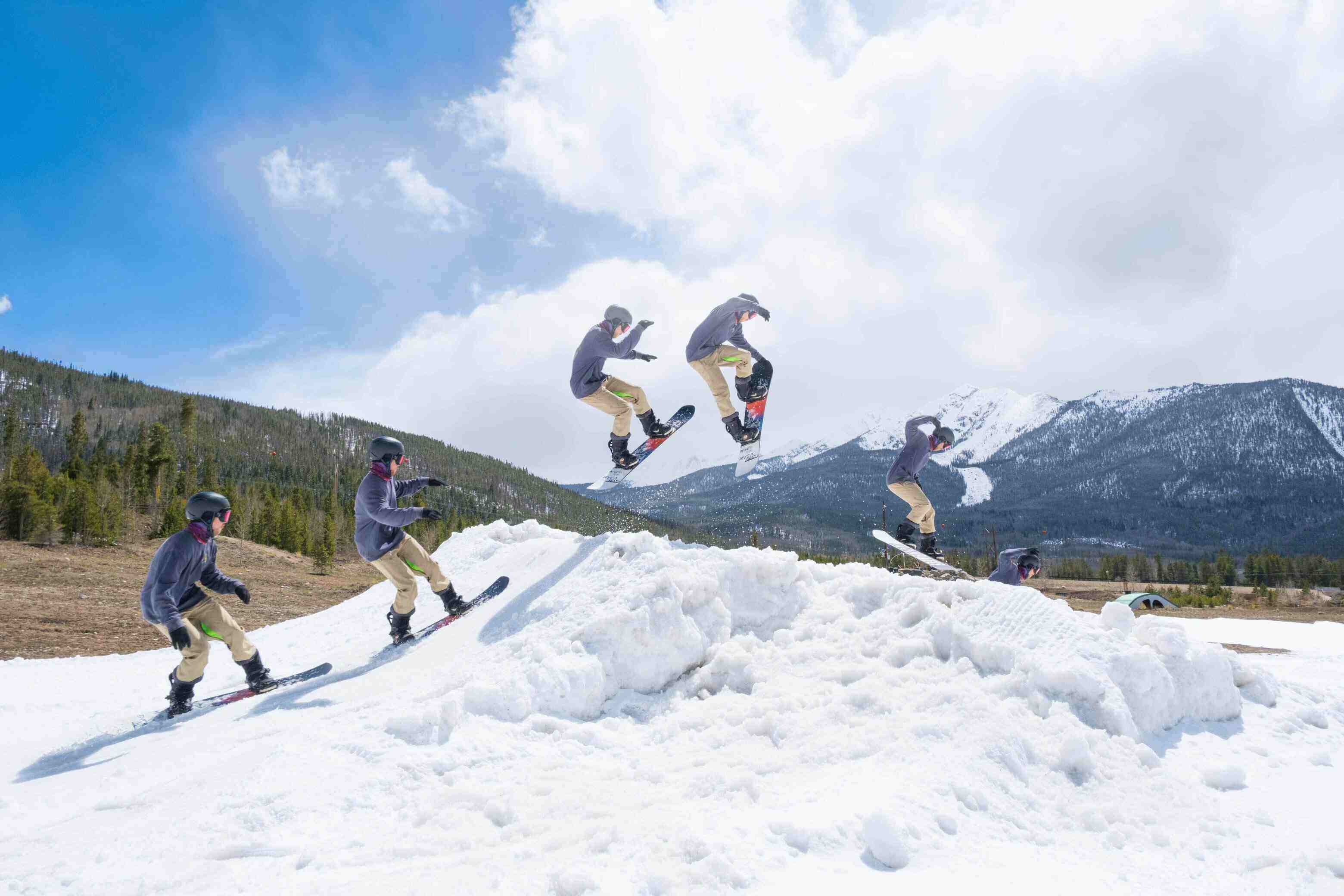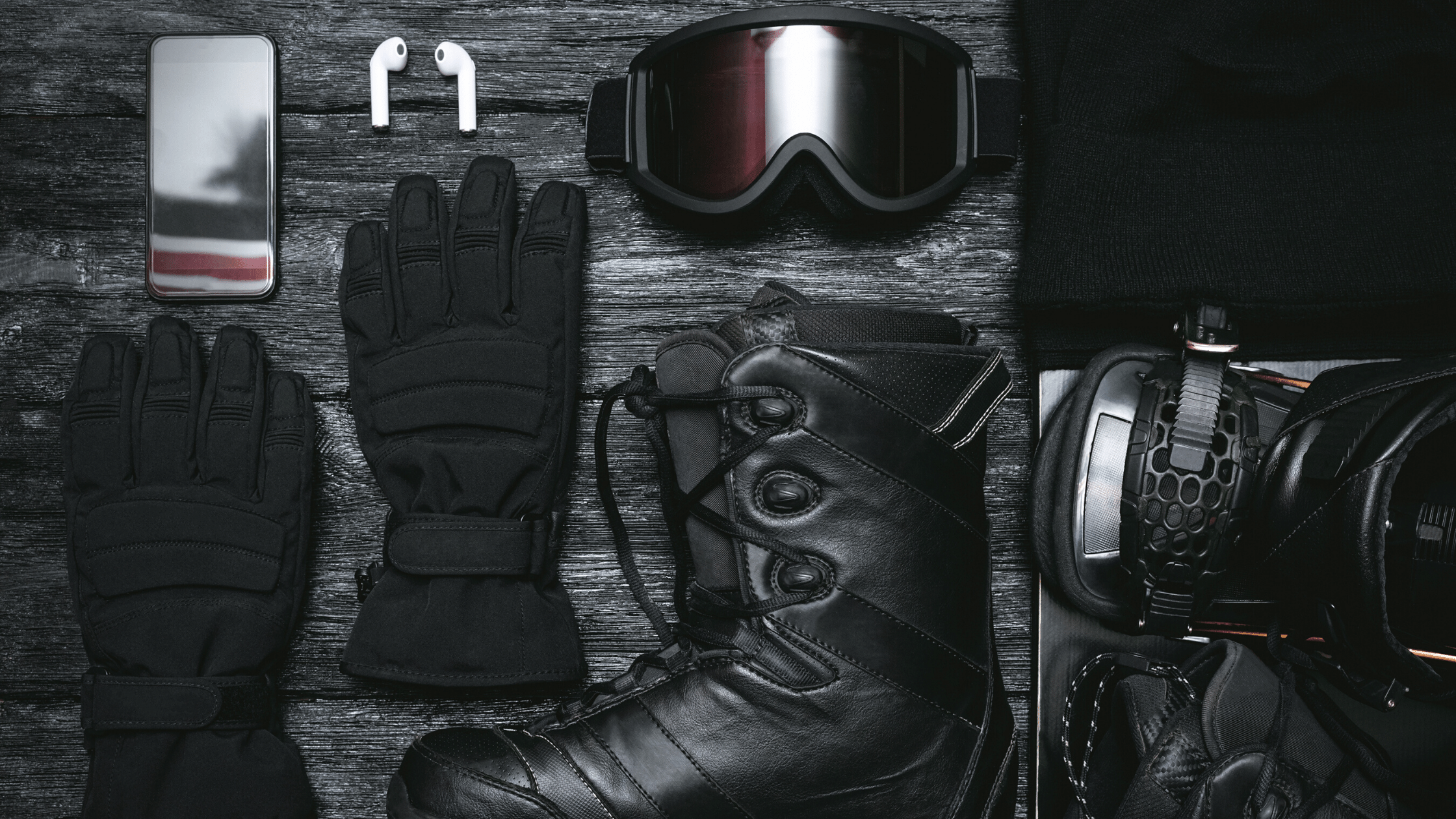“Well, I’m screwed!...
Was all that was running through my mind as I was propelling forward, destined to take a generous bite out of the snow, and possibly leave a tooth or 2 behind.
But… before I knew it, I had popped back up on my feet and was sailing back down the slope, dignity intact and not a single tooth missing!
Let’s face it. Falling hurts. We’ve all felt it. Catching edges, bailing on jumps, wiping out on boxes and rails. When you come down - it hurts like hell!
Although I haven’t been able to save myself from all the gnarly encounters with the ground that I’ve had, I have definitely reduced the odds of incurring a bad injury and I am thankful for a few tools and techniques that I have picked up over the years to help me better fall properly.
“Fall properly”. I know, sounds strange, but bear with me.
What makes falls on Snowboards so bad?
Well, when we lose balance and are about to fall over, our legs are usually the first port of call. We simply step out to regain balance.
However, as your feet are glued to that one single beautiful deck of yours, they can’t move independently. You can’t just regain your balance just by stepping out or stepping back.
So you rely on the other usual methods, such as outstretching your arms to save yourself. It’s instinctive, and makes sense in principle. Your body is trying to protect those vital organs of yours from getting trashed! The problem is that it's a bad idea as it can put an insane amount of pressure on the wrong parts of your body which can cause injuries, breakages and an awful lot of pain.
This has huge implications for a number of reasons:
- You have to sit out in recovery and waste the already limited amount of time you have on this planet to ride
- Your body is your tool. Your way of getting practical s*** done. Being unable to fully use your arms, hands while you wait to heal can really hinder your everyday activities
- You risk more permanent damage that could affect the way you do things for...life! I know people that cannot board anymore because they have broken themselves...
You have to fight the urge to outstretch your hands, and not put too much pressure on a particular body part. But, you still need to protect your vital organs, avoid breaking a rib or two, and avoid cushioning the blow with your face! So, what do you do?
Having these tools and techniques in place to fall safely has saved my skin more times than I can count, and I would like to share these with you.
1. Relax (and bend your knees)
I know it sounds obvious, but let’s start with the basics. I couldn’t tell you just how many people I see that are too stiff when riding, or stiffen up when they lose control.
Seriously! Stiffening up is the worst! If you’re stiff, you don’t absorb the contours of the slope or surface. Keep relaxed, keep your legs bent and your body fluid. You’ll find that your board will flow better with the changes in terrain and your legs will act like little shock absorbers to help counter any sudden lumps and bumps in the piste. If in doubt, bend your legs and try to get lower to the ground.
Also, when you fall, a loose body will better absorb the impact and the energy from the fall will better disperse over your body. If you’re rigid, the vibration from the impact will hit you directly and will more likely cause breakages.
2. Wear appropriate protective gear
Even experienced snowboarders should wear a helmet, goggles and wrist guards at the very least. Beginners and more advanced riders doing tricks may also wear hip/butt pads, which cushion the backside against backward falls, or chest/torso pads and knee pads for protection during forward falls.
Protective gear is like an upgrade to the human body - allowing you to push harder, reduce damage caused from painful falls and get back up again and continue riding. I feel like superman when I’m armoured up!
You want less pain, more growth and quicker recovery? Get yourself some protective gear!
3. Increase your surface area.
One of the main keys to falling well is to spread the force of the impact along maximum surface area, so that it’s not concentrated on a particular body part; wrist, knee, collarbone etc.
Ever wonder why stuntmen and street performers can lay on a bed of nails? Because that piercing pressure is spread across multiple different points or surfaces. If they tried to lie on one nail... instantly skewered!
Forward falls
Manage forward falls by keeping your forearms up in front of you - when you land, instead of outstretching your hands, plant your forearms (from your hands to your elbow) to further cushion the impact. Careful though. Make sure you don’t have any stray fingers dangling around. Try and keep your fist clenched to avoid breaking one of those little piggies off. And don’t fall directly onto your hands. That is a fast track ticket to wrist brokensville.
Backward falls
Fall backward with less risk of injury by tucking your chin against your chest, to keep the back of your head from hitting the snow; do your best to fall butt-first, then roll smoothly onto your back so as not to take the entire impact all at once.
Keep your arms in front of your chest if you can but, if you fall prey to instinct, use the entire surface area of your forearms and don’t just outstretch your hands. As with a forward fall, trying to catch yourself on your hands can cause serious wrist injury.
4. Just roll with it
Rolling with the fall can greatly reduce the impact from a fall. Learning how to break roll has saved me more times than I can count. A break roll is where you tuck and roll into the fall, thus reducing the shock on any particular body part, and easing the pressure over time, rolling with the momentum until the momentum is spent.
You usually do this by dipping a shoulder and tucking your head in. I studied this doing mixed martial arts, but I see plenty of free runners use this technique.
This dude rolls like a pro!
https://www.youtube.com/watch?v=r_RCNpvz2hc
He lands on concrete! Bad… ass! And see how he uses the momentum to his advantage.
Let me just say that I do not suggest practicing this on concrete. And I would highly suggest getting a qualified instructor to teach you how to do this properly.
You may say, “but Nick, that’s not instinctive”. Then drill it, practice it, repeat it. Practice it somewhere safe though in an MMA gym, with a parkour instructor, in a gymnastics class. Somewhere that you can learn safely.
Honestly, once you have this down, it will be a game-changer! I have come over a fair few times now, and managed to roll over and pop back up the other side.
And this s***’s transferable!
I curbed my mountain bike and flew over the handlebars. As I had drilled the break roll at MMA, I managed to tuck in, roll and avoid a gnarly injury without even thinking about it!
Luckily people were watching so I looked like an absolute boss! (well, after the clumsy superman over my bike anyway).
5. Act based on your skill level, or just past it
Finally, choose a slope, surface or trick that suits your skill level, or just pushes past it. Countless accidents are caused by people overestimating their ability and taking on runs and features way beyond their capability.
Beginners should stick to gentle, uncrowded slopes with soft, groomed snow until they have developed enough confidence to go to that next level.
Those more advanced should think about their skill level when thinking about sending it, and definitely don’t fall prey to your ego or kodak courage. Do you want to ultimately do the trick? Or do you want to be injured so badly that you can’t perform the trick again?
Sure, push your limits, but progressively. Gradual progression is actually speedier over the long run as you injure yourself a lot less. People don’t consider the time that you may end up sitting out in recovery.
Summary
When it comes to life, be the smart person and try to be as proactive as possible. You aren’t going to avoid every accident on the slopes, but you can reduce your odds of falling and causing a serious, more long term injury.
Long term damage can have long lasting effects. As I mentioned. I know people that can’t ride anymore because they’re broken. And we don’t want that. We want to be riding until we’re old and grey.
That being said, despite these smart precautions, you still will fall at some point, and having a decent set of protective gear is a no-brainer! Explore our gear here.



